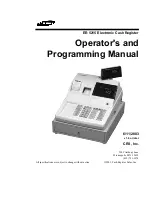
Subject to change without notice
24
C a l i b r a t i o n
is low, the counter makes all necessary prepa-
rations for a measurement. With the high level
of the gate signal, measurement starts when the
input signal triggers after a synchronization delay.
Measurement stops on the fi rst trigger after the
gate signal changes from high to low. The external
gate overrides the set measurement time. The
external gate signal must be in the range 100ns
... 10sec. but the effective gate time will never be
smaller than 150 μs.
External gate is selected by means of the pushbut-
ton
and indicated by means of LED. External
gate can be used in all functions.
Example applications are multiple burst fre-
quencies and masked time intervals. Note that
if RF bursts are to be measured using frequency
C, the burst should contain at least 128 cycles of
the f requency to be measured. External gating is
active according to the level applied to the input
(rear side of mainframe).
Calibration
Crystal oscillators are subject to natural aging
during operation, which leads to deviations from
their basic accuracy. Therefore they should be
re-aligned at least twice peryear to ensure the
accuracy indicated in the specifi cation.
Caution!
The time base of the HM 8021-4 unit should only
be realigned, if a high-precision frequency stan-
dard is available.
If recallibration is necessary it is carried out as
follows:
1) Select function FA (Frequ.A), OFFSET and
DISPLAY HOLD should be in OFF position.
2) Apply a frequency standard of 1, 5 or 10 MHz
to input A and adjust channel A trigger setting
for a stable reading.
3) Depress
RESET and then GATE TIME
for approx. 5secs.
4) The display shows ”A...O” during the push
buttons are depressed.
5) When the switches are released the display
shows the date of the last recalibration (DD-
MM-YY or 00-00-00).
6) You may leave calibration mode by depressing
RESET T. In this case no changes are made and
the unit is working in normal mode.
7) If you want to change the date of the last ca-
libration youshouidproceedfromste 5:
Using the key
§
or
¨
(left or right function shift
keys) you can choose the digit that has to be
changed (not fl ashing). The different digits are
changed by pushing down the GATE TIME
key several times. When the last digit is cor-
rected (now the last digit should light brightly
e.g. 20-02-89) you can leave the calibration
procedure (continue with step 7a) or frequency
calibration can be performed (continue with
step 7b).
7a) If you only want to store the date of the last
calibration without changing the timebase
calibration, there should not be any signal at
the input A during the following steps. After
depressing the right function key
¨
”A...” will
be indicated in the display after a few seconds.
If you now depress the reset button you are
again in the normal mode.
7b) If there is a standard frequencyof 1, 5 or 10 MHz
at the input A, depress the right function key
¨
. A few seconds later the display shows
following informations:
A...if the standard frequency applied is not
accepted
A... 1 6 if the counter has recognized a
1 MHz standard























